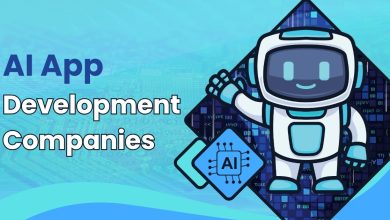
Before 10 years, AI has moved from a conceptual abstraction to a real world tool that organizations can apply to drive greater efficiency, make better decisions, and enhance the customer experience. Most organizations begin their AI journey with small pilot projects, proof of concepts that validate the usability of the technology, and the business effect it will have. For all but a few companies, the issue is scaling pilots across the function to deliver measurable value to the enterprise. Some of the AI business leaders agree on one point: effective AI adoption requires you to consider how you can be structured with experimentation while not losing sight of governance.
First, you need to understand where they can add high value, for example, deliver materials quicker, predict customer actions if the AI can offer useful results. One example of its value is utilizing AI-powered analytics in our marketing efforts. The initiatives began as pilot projects that established measures of effectiveness of campaign targeting and budgeting models. Through measurement, data collection and iterative approaches, we were successful in scaling models out through channels to obtain quantifiable ROI for the marketing function.
Why Many AI Pilots Fail to Scale
Pilots most frequently fail to have lasting impact only because they remain in a department or function silo. To solve this issue, businesses must develop a governance structure that facilitates cross-functional collaboration, establishes measurable success metrics, and frequently checks adoption with teams. An AI task force was developed to solve this issue, composed of members from marketing, product, IT, and operations. This group of pilots measured pilot success and also examined which models were mature enough to scale, ensuring alignment with the organization’s strategic goals and taking into account risk mitigation.
The other important lesson of scaling AI is the way to address the human aspect of adoption. Employees will resist tools, new or mature, if they feel threatened or if their process actually changes.
Addressing Employee Resistance to AI Adoption
A successful AI rollout + evaluation uses technology with training, and open communication. For example, when rolling out AI content generation tools, we made sure to explicitly say that AI was being used as a creative prop and not for judgment calls. We also provided workshops and support follow-through, leading to rapid buy-in and easy adoption. Over time, the technology remained an integral part of the workflow of the workday, maximizing productivity and winning back employees’ valuable time, as well as employee satisfaction and trust.
Proper technology strategy is also a concern. Cloud computing technologies, executives, automation technologies, and elastic machine learning frameworks offer an expedited mode of implementation and versatility.
Study Case: Business Outcomes After AI
In our example, we used cloud infrastructure to deploy AI models so that teams could quickly access insights in real time, try out different approaches, and iterate rapidly without large up front investments. Scalability is essential in operations because even the most successful pilot will fail, and not meet its potential for delivering value, if it cannot scale to enterprise scale. Finally, measuring success will depend on combinations of quantitative and qualitative measures. Operational measures, such as processing speed, accuracy, and cost savings must be measured alongside business performance measures, such as revenues generated, customers’ satisfaction increase and increased employee engagement.
Because the company has visibility on these metrics, they can determine what AI solutions to scale, and where to cut. Data driven strategy is how pilots become real and allow the company to scale with measurable outcomes. Scaling AI is not a tech effort; scaling AI is a strategy effort. Leaders must consider end to end all processes, governance, and human beings.
AI pilots are excellent prospects for pilot-proofing concepts, but what the company really gets is embedding AI into the business functions of the company in a way that provides transparency, code of ethics, and drives business objectives. Companies using this method can scale from a single pilot to enterprise wide transformation. AI is not a hype, it is an operational efficiency force multiplier, decision making improver and accelerant of competitiveness. By leveraging proven pilots, functional alignment and purposeful change management organizations can unlock the full potential of AI without taking risks and creating long-term sustainable value.
Summary
AI is an enterprise pursuit that will start with pilots but will really pay off when the endeavor is scaled to a fully developed enterprise strategy. Governing companies will offset fumes education with governance, embrace technologies for the benefit of enterprise value, and provide scaffolding for their employees. These actions can move AI from a project-based methodology to a sustained practice of expansion, productivity and innovation.



